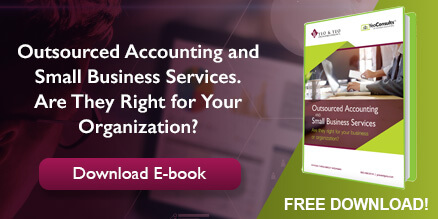As we get into the last quarter of the fiscal year, it’s time to start thinking ahead of all of the year-end tasks that await. In many cases, preparing the required Management’s Discussion and Analysis (MD&A) is sometimes more of an afterthought than something at the top of the list. The MD&A is to provide an objective and easily readable analysis of your district’s financial activities based on currently known facts, decisions, or conditions. The MD&A should always be presented before the basic financial statements as it is intended to provide a broad picture of how the year went, for an individual who doesn’t necessarily understand how to read the rest of the financial statements.
Although it’s called Management’s Discussion and Analysis and should be written from Management’s perspective, GASB has indicated a few required components that must be included to make sure useful information is presented. The main goal is to focus on the primary government (district-wide focus, excluding any potential component units) activities for the current year compared to the prior year and should be in a summary format, not a duplication of information presented in the basic financial statements.
At a minimum, the MD&A should describe the basic financial statements and how they relate to each other and what information each statement provides, and convey an understanding of why the measurements used in the statements differ.
Next, the following information is to be presented comparing the current year to the prior year, and would be expected to be presented in every MD&A, if they are applicable:
- Total assets, distinguished between capital and other assets
- Total liabilities, distinguished between long-term liabilities and other liabilities
- Total net assets distinguished between:
- Amounts invested in capital assets, net of related debt
- Restricted amounts
- Unrestricted amounts
- Program revenues, by major source
- General revenues, by major source
- Total revenues
- Program expenses, at a minimum by function
- Total expenses
- Excess (deficiency) before contributions to endowments, special and extraordinary items and transfers
- Contributions
- Special and extraordinary items
- Transfers
- Change in net assets
- Ending net assets
Now, remember, the goal of the MD&A is for an individual not well-versed in reading a financial statement to understand how the year went. Once the above information is presented, the true value in the MD&A is the analysis that management can offer to explain the numbers presented. GASB indicates you should present an analysis of the following information in the MD&A:
- Has the overall financial position and results of operations improved or deteriorated this year compared to last year, and what were the reasons for the change? These reasons should include any known economic factors such as changes in tax, or employment bases that impacted the year.
- Have there been significant changes in fund balances or fund net assets or the availability of any fund resources for future use?
- What caused the variations between the original and final budget amounts as well as variances between the actual results and the final budget amendment for the General Fund?
- What sort of activity took place relating to capital assets and long-term debt activity? This should include any changes in credit ratings and debt limitations.
Finally, GASB indicates you should describe known situations that would have a significant effect on financial position or results of operations going forward.
Aside from those minimum requirements, any additional information that is deemed of value to the users can be added to the MD&A at management’s discretion. To avoid duplication of efforts, it might be useful to print a copy of last year’s MD&A, and as you are preparing your final budget amendments and closing out the year, jot down some of those factors that differed from the prior year, and those are the key takeaways you will want to present in your MD&A. Also, if there are significant variances from the prior year that your auditor inquires about, those would also be helpful to include to explain variances within the MD&A.
If you would like assistance in preparing your MD&A, a Yeo & Yeo professional would be happy to help you verify that you comply with the minimum requirements.



